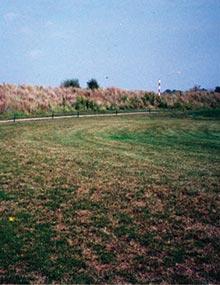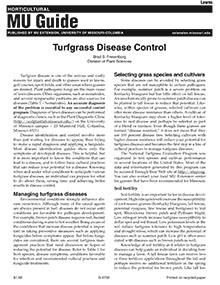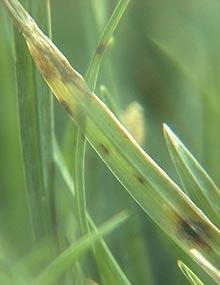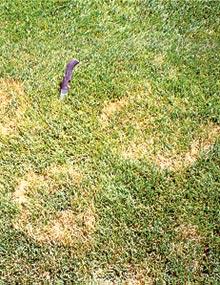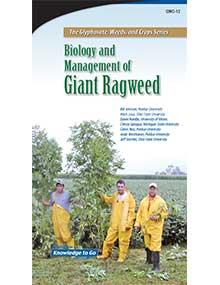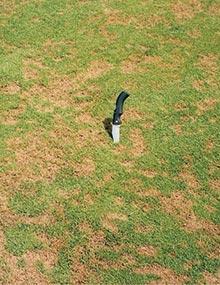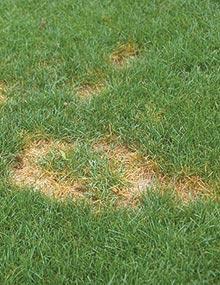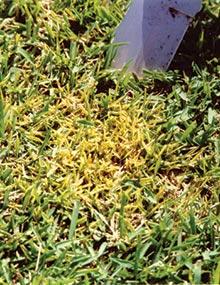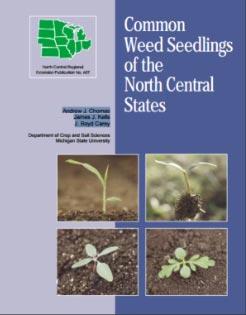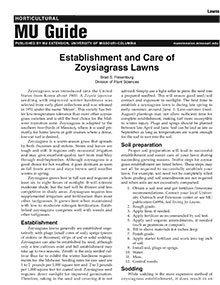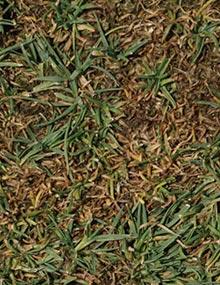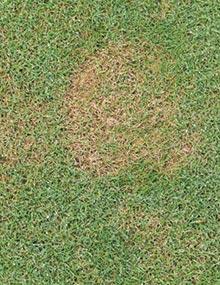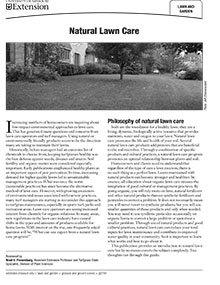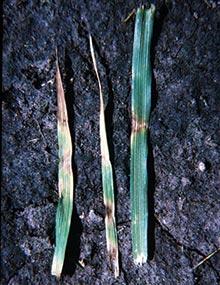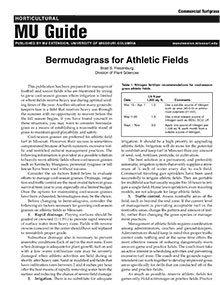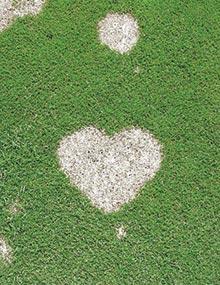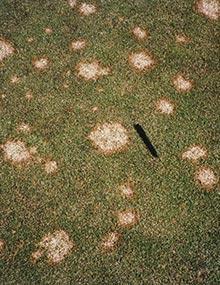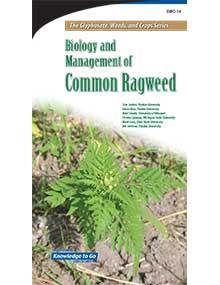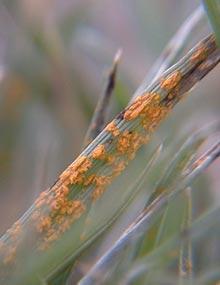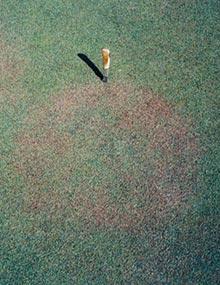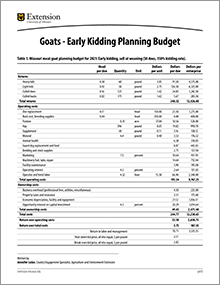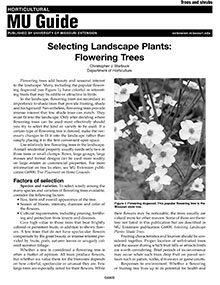Identification and Management of Turfgrass Diseases, Page 08
Reviewed
Dollar spot is a common disease on creeping bentgrass, Kentucky bluegrass and perennial ryegrass, but it is rare on tall fescue. It also occurs on zoysiagrass, bermudagrass, buffalograss and annual bluegrass .
Turfgrass Disease Control
Revised
Identification and Management of Turfgrass Diseases, Page 11
Reviewed
Gray leaf spot, also called blast, occurs in most areas of the country where perennial ryegrass is grown. Disease development is sporadic with little or no disease development in some years. Nevertheless, the potential destructiveness of gray leaf spot forces many turfgrass managers to apply preventive fungicide applications every year.
Identification and Management of Turfgrass Diseases, Page 14
Reviewed
Rhizoctonia zeae forms pink to orange bulbils (resting structures). The fungus has been observed with increasing frequency since the early 2000s.
Biology and Management of Giant Ragweed
Reviewed
Editor’s note
The following abstract describes a publication that is only available as a downloadable PDF.
Identification and Management of Turfgrass Diseases, Page 17
Reviewed
Pythium foliar blight is one of the most feared turfgrass diseases, because the disease develops rapidly during periods of high temperature and high relative humidity. If left untreated, extensive loss of turf can occur in a few days.
Facts About Glyphosate-Resistant Weeds
Reviewed
Editor’s note
The following abstract describes a publication that is only available as a downloadable PDF.
Identification and Management of Turfgrass Diseases, Page 20
Reviewed
Summer patch, sometimes referred to as frogeye patch, is a destructive disease of Kentucky bluegrass maintained for golf course fairways, green surrounds, parks and residential landscapes
Identification and Management of Turfgrass Diseases, Page 23
Reviewed
Yellow tuft is a cool-season disease that is commonly observed on creeping bentgrass and intensively managed Kentucky bluegrass.
Common Weed Seedlings of the North Central States
Reviewed
Editor’s note
The following abstract describes a publication that is available for purchase from Michigan State Extension. To order this publication, please visit the MSU Extension Bookstore.
Establishment and Care of Zoysiagrass Lawns
Reviewed
Zoysiagrass is a warm-season grass that grows best in full sun. It can be established in several ways. Learn how to establish and care for a zoysiagrass lawn in this guide.
Identification and Management of Turfgrass Diseases, Page 03
Reviewed
Anthracnose basal rot is a destructive crown rotting disease of creeping bentgrass and annual bluegrass on putting greens. On mixed bentgrass/annual bluegrass putting greens, the causal fungus infects one species or the other but rarely both.
Identification and Management of Turfgrass Diseases, Page 06
Reviewed
Copper spot is a foliar disease of bentgrass, with severest outbreaks occurring on velvet bentgrass. It also occurs sporadically on creeping bentgrass greens and higher cut creeping bentgrass tees and fairways. Gloeocercospora sorghi causes a leaf spot of bermudagrass and zoysiagrass as well.
Natural Lawn Care
Reviewed
Identification and Management of Turfgrass Diseases, Page 09
Reviewed
Drechslera diseases are part of a group of diseases caused by fungi that were once cataloged in the genus Helminthosporium. Over the years, taxonomists have revised the genus Helminthosporium to include the genera Drechslera, Marielliotta, Bipolaris and Exserohilum. This section covers the diseases Drechslera leaf spot and melting-out caused by D. poae and red leaf spot caused by D. erythrospila.
Bermudagrass for Athletic Fields
Reviewed
Identification and Management of Turfgrass Diseases, Page 12
Reviewed
Gray snow mold is a winter turfgrass disease in regions where snow cover persists for long periods. All grasses can be damaged to some extent, but injury is often more severe on annual bluegrass and bentgrass putting greens.
Identification and Management of Turfgrass Diseases, Page 15
Reviewed
Microdochium patch is most common on new bentgrass greens under cover or in situations where nitrogen fertility was high going into the winter.
Biology and Management of Common Ragweed
Reviewed
Editor’s note
The following abstract describes a publication that is only available as a downloadable PDF.
Biology and Management of Horseweed
Reviewed
Editor’s note
The following abstract describes a publication that is only available as a downloadable PDF.
Identification and Management of Turfgrass Diseases, Page 18
Reviewed
Rust occurs to some extent on all turfgrasses, but the rust fungi are generally host specific. Rust is most severe on susceptible cultivars of Kentucky bluegrass, tall fescue, perennial ryegrass and zoysiagrass. Rust symptoms usually appear in late August to early September and continue through the fall months.
Identification and Management of Turfgrass Diseases, Page 21
Reviewed
Take-all patch of creeping bentgrass is a soilborne disease caused by a darkly pigmented, ectotrophic root-infecting fungus. The disease is most common on new greens. It also occurs on reconstructed greens, especially when methyl bromide had been used in the renovation.
Goats — Early Kidding Planning Budget
Revised
Use this doe flock enterprise budget to estimate costs and returns when birthing goat kids in the winter — a system with seasonally high prices for kids and low land needs.
Selecting Landscape Plants: Flowering Trees
Reviewed
Flowering trees add beauty and seasonal interest to the landscape. Many, including the popular flowering dogwood (Figure 1), have colorful or interesting fruits that may be edible or attractive to birds.
